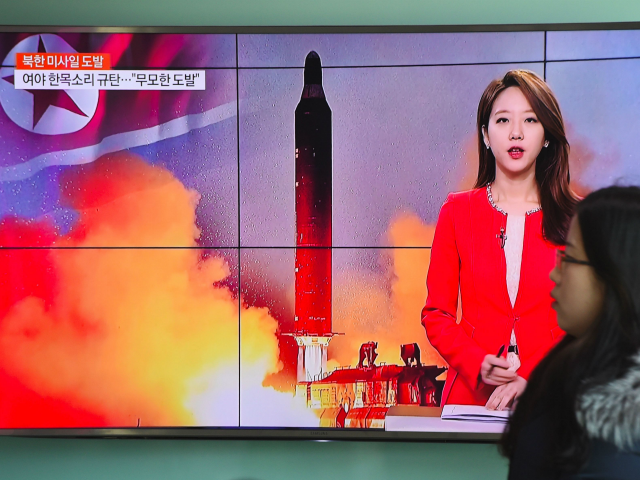An analysis published by the monitor site 38 North on Monday using satellite imagery of North Korea’s Sohae Satellite Launching Station finds that authorities appear to be dismantling key areas of the site, limiting North Korea’s ability to launch ballistic missiles.
The facility reportedly plays a key role in the development of rockets and missiles – not of nuclear material – so its apparent partial shutdown may mean that communist dictator Kim Jong-un may have a diminished interest in long-range missiles. The dismantling of such a site does not necessarily mean that short-range targets such as South Korea and Japan are safe from launches, or that North Korea may not possess other secret sites to launch missiles from.
According to analyst Joseph S. Bermudez, Jr., satellite images dated July 20 reveal that North Korean authorities have brought construction materials into the site and begun dismantling necessary structures to launch rockets and missiles. Bermudez notes the destruction of the rail-mounted processing building (“where space launch vehicles are prepared before moving them to the launch pad”) as particularly notable, as this makes long-range launches at the site impossible.
After two days of images show growing activity at the site, 38 North notes that “fewer vehicles are present and the test stand superstructure has been completely dismantled, leaving only the base, which is also in the process of being removed.”
The site describes this as a “significant confidence building measure on the part of North Korea.”
While shutting down this site makes it less possible for North Korea to test missiles that can hit American territories, it is not clear that it diminishes the ability of the North Korean military to hit its neighbors, particularly South Korea and Japan. Prior to negotiations with the United States this year, one of North Korea’s last belligerent acts in 2017 was firing a rocket over Hokkaido, Japan’s northernmost island. North Korea’s state media continues to regularly attack Japan even as it demands that the international community allow for an official end to the Korean War. As North and South Korea signed the ongoing armistice along with China and the United States, the two Koreas cannot formally end the war on their own.
The move is the latest of its kind from North Korean officials, who are keenly aware of how closely American and other international analysts observe movement in their military sites through satellite images. In May, 38 North reported an even more significant shutdown: the dismantling of facilities at the Punggye-ri Nuclear Test Site, where most such tests in North Korean history have occurred. Pyongyang officials began taking down watchposts and key buildings in the area before making an unusually public announcement and allowing international media into the site.
That month, North Korean authorities claimed to have blown up the functional tunnels of the facility in front of the reporters, though they denied access to the site to anyone with nuclear weapons expertise, leaving uncertain to what extent they had destroyed the site.
With the shutdown of Sohae and Punggye-ri, North Korea’s communist regime appears to have made proactive steps in developing trust with the United States following the June summit between Kim and American President Donald Trump. One sign that North Korea may not be fully ready to give up its nuclear ambitions, however, is yet another report from 38 North published in June that revealed activity at the Yongbyon Nuclear Scientific Research Center. Unlike Punggye-ri, Yongbyon has long functioned to enrich radioactive materials and develop nuclear energy, not to test weapons.
Similar to the Punggye-ri explosions, North Korea blew up part of the Yongbyon facility in 2008 under Kim Jong-il. Authorities appeared to only destroy a water cooling tower, however, and by a decade later satellite images showed “improvements to the infrastructure” at the facility even as the weapons testing site was shut down.

COMMENTS
Please let us know if you're having issues with commenting.